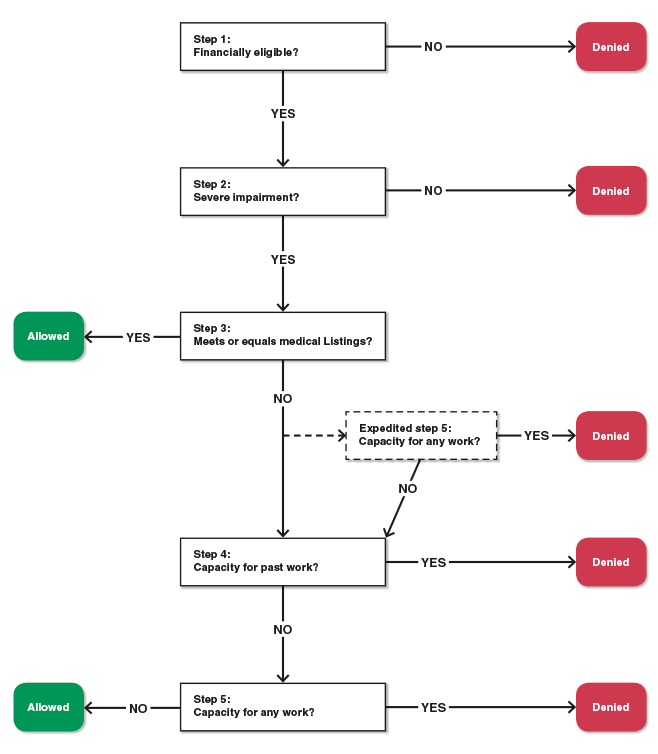If you're disabled and no longer capable of working, you may be wondering how the Social Security Administration (SSA) decides if you're disabled and no longer able to work. You may be surprised to know that there are many layers to disability approval, and no two cases are the same. The SSA will use its own medical manual, evaluations, and your work history to determine if you're disabled and unable to maintain employment.
Step One: The SSA Decides if You’re Working
This step is pretty straightforward—if you’re still working, you will not qualify for Social Security disability benefits. The SSA defines “work” as earning approximately $1,100 per month in taxable income. If you’re still able to do this despite your disability, whatever your diagnosis may be, you will not be approved for Social Security benefits. If you’re not working, the SSA will then send your application to Disability Determination Services (DDS) to make a ruling on your condition.
Step Two: DDS Determines if Your Condition is “Severe”
Only severe conditions will be approved for disability benefits. What does the SSA consider to be severe? If you’ll be out of work for at least 12 months, or if you have a condition that will result in death (like metastatic cancer or ALS), you will be approved. Minor conditions that will heal quickly like broken limbs will not qualify. If you’re still able to walk, lift weight, type, use a phone, and perform many other normal activates, it’s unlikely that DDS will approve your claim based on its medical severity.

Step Three: The SSA Reviews the Blue Book
The Blue Book is the colloquial term for the SSA's manual on conditions that qualify for disability benefits. The Blue Book contains hundreds of conditions that can potentially qualify for benefits, plus the test results or symptoms you’ll need to be approved.
Blue Book qualification will vary depending on your diagnosis. For example, applicants with advanced cancer will automatically medically qualify, and should even have their claims expedited. The SSA uses sophisticated computer systems to flag applicants who clearly have a severe condition to expedite their approval process. If you have another condition, such as a spinal cord injury, the SSA will compare your abilities to its own listing in the Blue Book. If your symptoms “match” the necessary Blue Book criteria, you should be approved. If not, you’ll need to move onto Step Four.
Step Four: The SSA Reviews Your Past Work History
You may still be approved for disability benefits even if you don’t meet a Blue Book listing if you can prove you cannot maintain employment with your disability. For example, a cashier who’s on her feet all day may not be able to work while she’s undergoing chemotherapy due to the nausea and other severe side effects. Earlier stages of cancer don’t always qualify via the Blue Book, but if you still cannot work for at least one year you could be approved.
Step Five: The SSA Determines If You Can Do Any Other Work
If you cannot keep your current job, the SSA will finally determine if there are any other suitable employment options for you. Let’s go back to the same cashier example. If this applicant graduated from college with a degree in business studies three years before receiving a cancer diagnosis, the SSA may argue that while she cannot remain a cashier during her cancer treatment, she could still find a suitable job with less physical requirements, like working as a secretary or in a similar office setting where the work is sedentary.
Signs That You Will Be Approved For Disability
Although the process of applying for social security disability can be lengthy, there are some signs that can indicate that you might be approved for disability. Overall, your disability must be so severe that you are unable to work your current job or transition to other work. Also, if your condition is listed in the blue book, you likely have a better chance of approval. Unfortunately, up to 70% of initial applications are denied. Before you invest a lot of time in applying for disability benefits, be sure to review the SSA’s criteria for deciding who’s eligible for benefits. To further check your eligibility for benefits, please consult the social security disability process flow chart pictured below.
